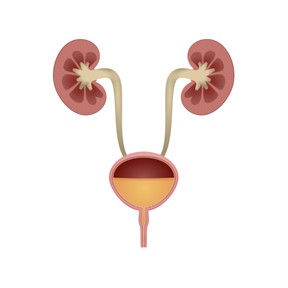
The excretory system
I can name the parts of the excretory system and describe their functions.



8,000 schools use Gynzy
92,000 teachers use Gynzy
1,600,000 students use Gynzy
General
Students learn about the body system of excrement, what it is, and how it functions to keep a body healthy.
Standards
MS-LS1-3
MS-LS1-8
Learning objective
Students will be able to describe the excretory system and explain the purpose of the different parts that make up the excretory system.
Introduction
Students observe a picture of a trash pile and think about what would happen if the city didn't get rid of the trash. Prompt students to think about what happens to the waste in our bodies. Explain the purpose of the excretory system in the body. Explain that without removing waste from the system, the body goes out of balance.
Instruction
The body has multiple types of excretion. Each of the following systems is discussed within this lesson: Digestive system, Respiratory system, Skin, and Urinary system. Start with the urinary system. It might be the most familiar to the students, but it is only a part of the excretory system. The urinary system deals with liquid waste from the body. Explain and point out the different body parts that are a part of the urinary system. Explain the kidneys in greater detail, as they are a key component of the urinary system. Explain that the sphincter muscles are the ones that allow you to hold your urine until you use the bathroom. Ask students to label the Urinary system shown on the interactive whiteboard. Next, describe the function of the Lungs. As the main part of the respiratory system, explain that lungs take in oxygen and excrete the gaseous waste of carbon dioxide. The next excretory system to explain is skin. Explain to students that your skin also plays a role in excretion, in excreting sweat, which eliminates excess water, salts, and other wastes. Ask students if they have even tasted salt in their own sweat. The next body part to discuss is the liver. Explain that the liver has the job of breaking down many substances in the blood, including toxins. The liver converts ammonia, produces bile and bilirubin, and clears the blood. As part of your digestive system, the large intestine is almost the final stop of all the food you eat.
Quiz
Students respond to true or false as well as multiple-choice questions that check the understanding of key concepts taught in the lesson. They are also given a few fill-in-the-blank questions with keywords from the lesson.
Closing
Review the learning goal with the students and ask a few questions to check their understanding of the excretory system. Then spin the wheel! Have students drag the correct letter of the matching excretion to the system that produces it.
Teaching tips
Students may find it embarrassing to talk about excretion systems. Be sensitive to body issues or comfort among students. Also, you may have students who have family/friends who have (or have seen) medical items like colostomy bags, which might allow for an interesting discussion on how we re-create the excretory systems for people who have medical issues.
The online teaching platform for interactive whiteboards and displays in schools
Save time building lessons
Manage the classroom more efficiently
Increase student engagement
Discover more!
About Gynzy
Gynzy is an online teaching platform for interactive whiteboards and displays in schools.
With a focus on elementary education, Gynzy’s Whiteboard, digital tools, and activities make it easy for teachers to save time building lessons, increase student engagement, and make classroom management more efficient.



